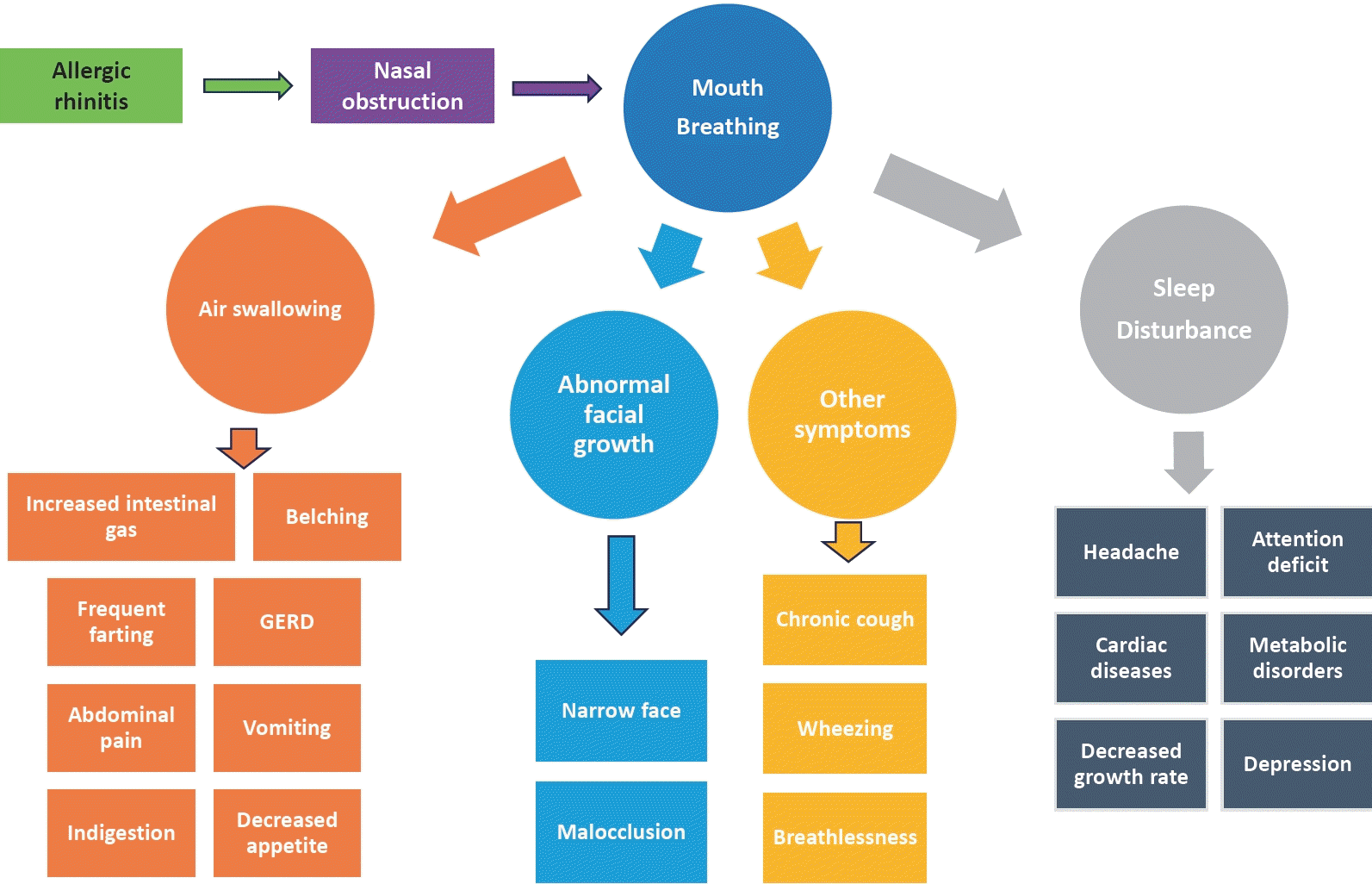Comorbidities of allergic rhinitis in children
Article information
Key message
· Allergic rhinitis in children often goes undiagnosed or untreated, with significant systemic complications like sleep disorders, growth issues, and gastrointestinal symptoms linked to nasal obstruction.
· A patient-centered action plan that considers symptom severity, preferences, and comprehensive management of associated complications is essential for effective treatment.
Allergic rhinitis is the most common chronic disease in children worldwide. In Korea, 42.2% of children have symptoms of allergic rhinitis; however, only 38.2% are diagnosed with and 21.2% are treated for allergic rhinitis [1].
The main symptoms of allergic rhinitis are sneezing, runny nose, itchy nose, and nasal obstruction, which can lead to other systemic conditions. The problem is that, while patients with mild or intermittent rhinitis are well aware of their symptoms, it is not uncommon for patients with severe or persistent rhinitis or their caregivers to be unaware that they have nasal obstruction [2,3].
A recent study analyzed the relationship between perceived nasal congestion and objective nasal congestion measured by rhinomanometry in pediatric patients with inferior turbinate or adenoid hypertrophy as well as in healthy children. The results showed a very weak correlation between the parent's perceived nasal congestion and the rhinomanometry results but no significant correlation between the subject's perceived nasal congestion and the rhinomanometry results [2]. These findings suggest that, in children with persistent nasal congestion, the degree of nasal congestion may not be accurately assessed through questioning alone.
Nasal obstruction causes mouth breathing, which can lead to sleep disorders such as sleep apnea, abnormal tooth and face growth, air swallowing, and other symptoms such as chronic cough, wheezing, and breathlessness (Fig. 1) [4].
Sleep affects an individual's mood, memory, cognition, hormones, and immune system. Sleep disorders such as obstructive sleep apnea can cause headaches due to hypoxia, heart diseases such as hypertension, heart failure, and arrhythmias, and metabolic diseases such as obesity and diabetes. Tiredness due to a lack of sleep can lead to difficulty concentrating and is often mistaken for attention-deficient and hyperactivity disorders, which can lead to learning difficulties in children and adolescents and poor work performance in adults. It can also lead to mental illnesses such as depression and symptoms such as a decreased growth rate and enuresis [5].
Air swallowing causes abdominal gas and bloating, which can cause frequent burping and flatulence. If the gas is not eliminated by burping, it can cause abdominal pain or vomiting. In adults, symptoms of gastroesophageal reflux disease may be common because they are able to burp, whereas younger children who are not good at burping may experience recurrent episodes of abdominal pain or vomiting [6]. Nasal obstruction severity and air swallowing have been well-documented in animal studies. Nasal obstruction causes death in rats within 3–4 days along with severe metabolic acidosis, abdominal distension, and air swallowing; the histological findings in such cases are similar to those of necrotizing enterocolitis in premature infants [7].
The review article in this issue suggests that treatment according to current allergic rhinitis treatment guidelines may be ineffective in the real world and that it is necessary to develop an action plan that considers symptom severity and variety, patient preferences, and treatment harms and benefits. For this purpose, it is necessary to clarify when, what, how, and why to treat allergic rhinitis. It is argued that an action plan based on a patient's needs can effectively manage their symptoms [8].
Making an action plan and treating patients according to their needs can be helpful if the patients are aware of their symptoms and management strategies. However, if patients are unaware of their symptoms, their condition may remain untreated. Therefore, it is important for clinicians who manage patients with allergic rhinitis to ask about and treat their primary symptoms (i.e., sneezing, runny nose, nasal obstruction, itchy nose) and ask about, monitor, and educate patients about the associated systemic symptoms and complications so that they know exactly what they are experiencing and how to best manage it.
Notes
Conflicts of interest
No potential conflict of interest relevant to this article was reported.
Funding
This study received no specific grant from any funding agency in the public, commercial, or not-for-profit sectors.

